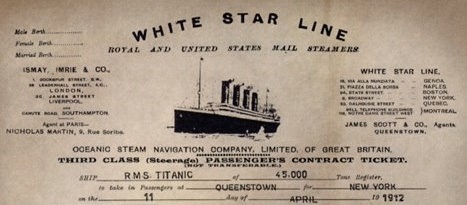The Launch of RMS Titanic
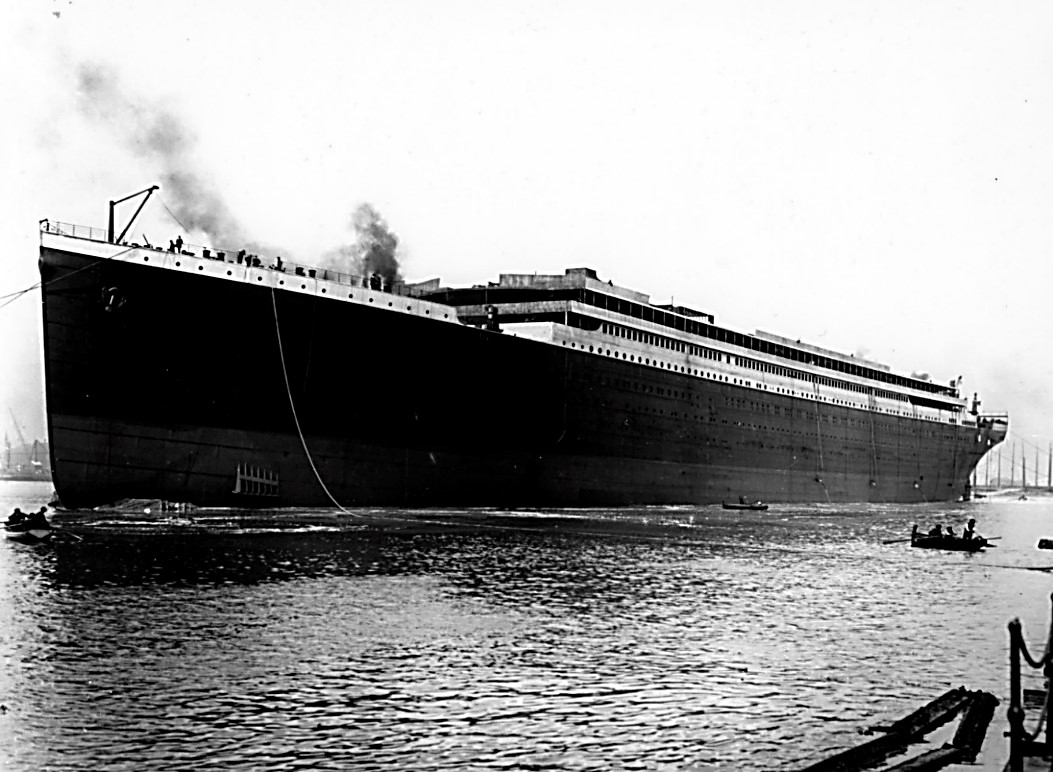
The WSL planned to launch the Titanic on the same day that the Olympic would commence her first voyage to Liverpool before her maiden voyage. The Titanic was launched on 31 May 1911 at 12:13 p.m., by Robert Falconer Keith, Head Foreman Shipwright at Harland and Wolff.
The event had been highly publicised and a crowd of over 100,000 gathered wherever they could. A small number of dignitaries including J. Pierpont Morgan, J. Bruce Ismay and other ticket holders watched from a grandstand specifically built for the occasion. Keith released the hydraulic launching triggers holding the ship in place.
22 tons of soap and tallow (beef or mutton fat) and train oil aided the movement and the Titanic moved at 12 knots away from slipway No. 3. Within 62 seconds, the Titanic was launched and ready to be fitted out for her maiden voyage. After the launch, there was a VIP lunch for the guests after which, Lord Pirrie took them for a short sea crossing to Liverpool on the Olympic to carry on with their celebrations. The Olympic stayed for one day at Liverpool before sailing to Southampton on her maiden voyage.
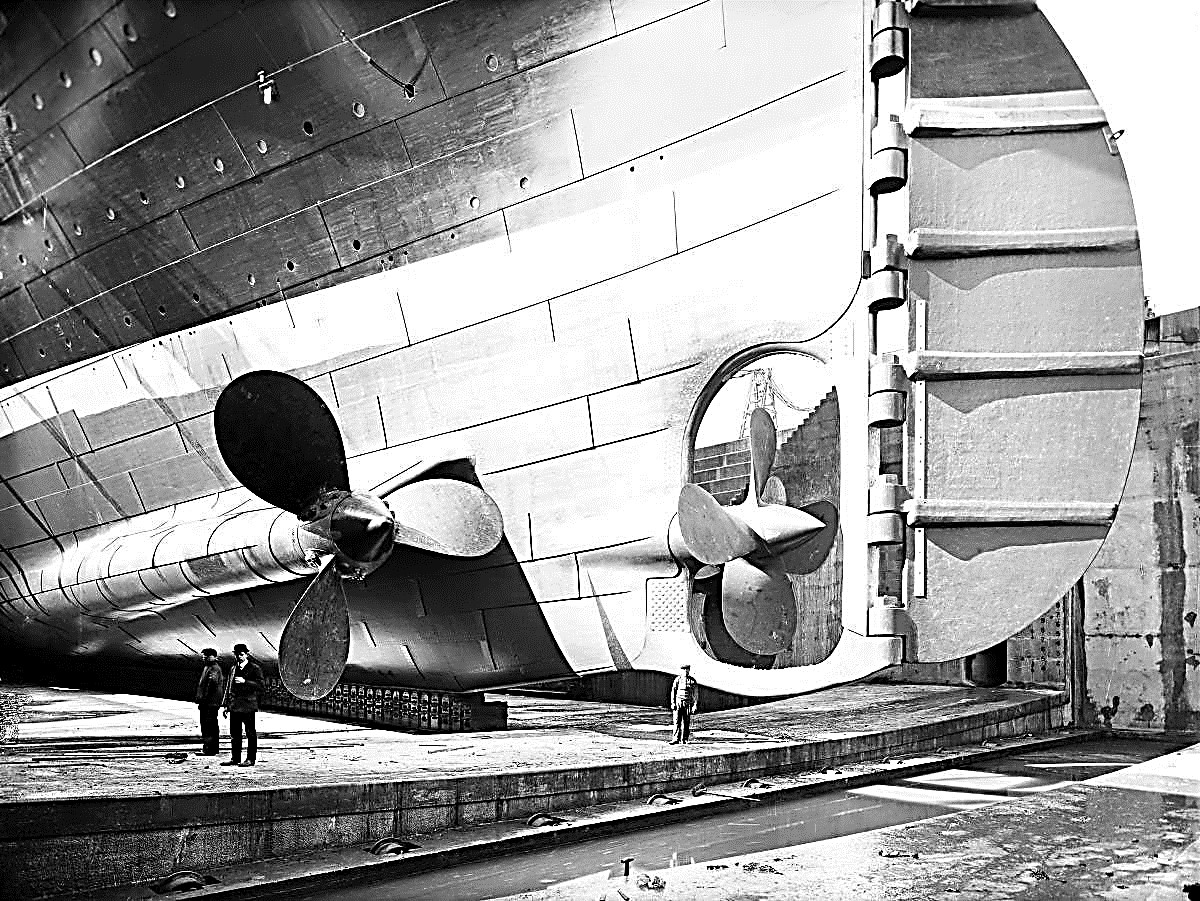
In early March 1912, the Olympic was in need of urgent repair and Titanic was removed from the Graving Dock so her fitting out was delayed which enabled the Olympic to resume service quickly. However, work was soon underway. A 200-ton floating crane was used to fit the Titanic.
Specifications
The Titanic, Olympic and Gigantic (Britannic) were the beginning of an era. Their huge scale was unsurpassed. The ships had ten decks (A-G) including the Orlop Deck. Below Deck G were the boiler rooms. 15 transverse watertight bulkheads extended from the double bottom to the Upper Deck at the forward end of the ship and to the Saloon Deck.
This created 16 watertight compartments. The bulkheads did not extend upwards to the first continuous watertight Shelter Deck. The bulkhead design did exceed the Board of Trade’s Regulations but after the loss of the Titanic, it was seen that the bulkheads should have been extended. See the Board of Trade’s recommendations on watertight compartments.
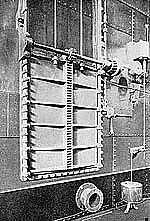 The watertight doors provided thoroughfares between compartments. They could be closed in three ways in case of an emergency. Firstly, the captain could trip a switch located on the Bridge to close all the doors simultaneously. Secondly, each door could be individually closed and secured. Finally, a float mechanism located beneath the floor of the watertight compartment would trigger if a compartment were to flood and the doors would shut.
The watertight doors provided thoroughfares between compartments. They could be closed in three ways in case of an emergency. Firstly, the captain could trip a switch located on the Bridge to close all the doors simultaneously. Secondly, each door could be individually closed and secured. Finally, a float mechanism located beneath the floor of the watertight compartment would trigger if a compartment were to flood and the doors would shut.
The hull’s design envisaged that it could stay afloat if any three compartments flooded. Should the Titanic or any of her sisters suffer a broadside collision they would be able to limp back to base for repairs. The Shipbuilder, a prestigious British shipping trade journal, labelled the Titanic as being “unsinkable.”
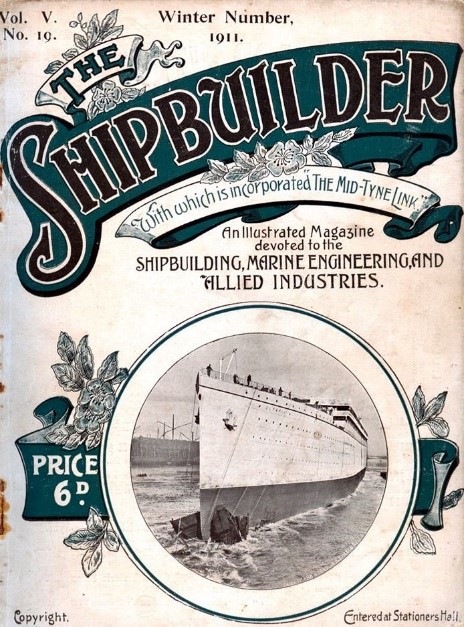
Both ships could attain speeds up to 21 knots under optimum conditions. Steam was generated from 29 boilers enabling their engines to develop 30,000hp in total. To make it easier to work in the boiler rooms, the double bottom was not continued up the sides of the hull but this would prove to be a disastrous design error.
There were 860 crew members; 320 working the ship, 475 stewards and 65 navigators. Most of the crew was accommodated in the lower deck. The captain and his officers were housed in the forward boat deck.
Titanic's Lifeboats
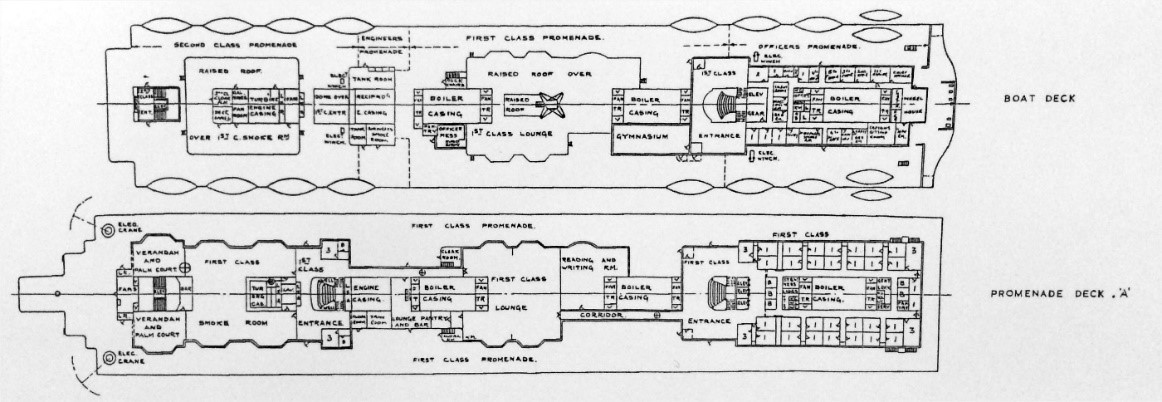
The designers of the Titanic slightly improved upon the regulations of the Board of Trade regarding maritime safety. Whilst these rules specified that a vessel over 10,000 tons needed 16 lifeboats the Titanic carried twenty: Sixteen wooden, and four collapsible. Two of the collapsible boats were kept on the roof of the officer’s quarters with little intention to use them except as a last resort.
Sixteen lifeboats were insufficient for the crew and passengers on board. Despite Alexander Carlisle having suggested 64 lifeboats were necessary, it was believed that too many boats would look unsightly and no one would travel on a ship crowded with boats, and that the First Class passengers preferred open space decks to walk around unrestricted by lifeboats.
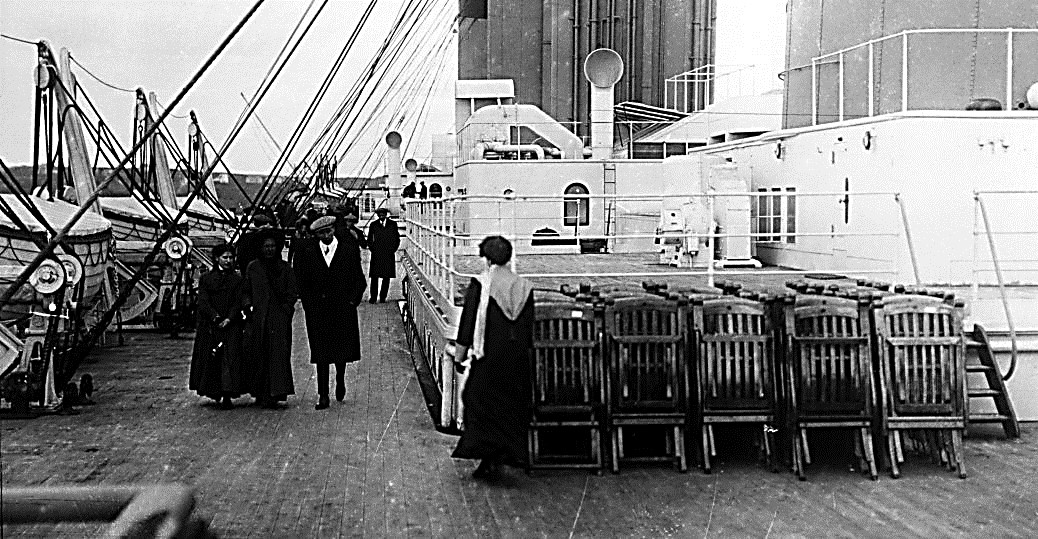
Why did the designers not ensure that there were enough lifeboats on the Titanic to accommodate each passenger and crew member? Some authors have suggested that the designers of large ships had no or little experience to make comparisons; after all, a disaster like the Titanic had never happened before. The size of such ships had grown 400% in 12 years and the shipping experts had no way of foreseeing what circumstances could give rise to a sinking especially with the advancement of watertight compartments and double skin hulls.
The writer does not does not support this line of argument. The designers were simply too overconfident and perhaps did believe such ships were unsinkable. They should have consciously recognized a shortfall in boats in relation to passengers and crew. However, hindsight is a wonderful thing.
Throughout the construction work, the Titanic was regularly visited by Francis Carruthers, the Board of Trade’s ship surveyor assigned to overseeing construction at the Harland and Wolff shipyard. It was his responsibility to ensure that the Titanic met with ALL the regulations stipulated by the Board. All his reports were sent to the Board of Trade and the items raised were quickly dealt with by the builders. Carruthers gave the ship a “satisfactory” rating on 25 March 1912.
Eight months had passed since the launch and her fitting had been completed. The Titanic was ready for her trials. The officers had been notified to board her and to familiarise themselves with her facilities.
The trials were scheduled to begin on 1 April 1912, but they were delayed by a day due to poor weather conditions. Thomas Andrews was on board to oversee her trials and make notes whilst Francis Carruthers conducted a comprehensive survey and report. The Titanic was towed down the Belfast Lough by the tugs Hercules, Herculaneum, Huskisson, Hornby and Herald. She easily accelerated to 21 knots and plunged to an emergency stop.
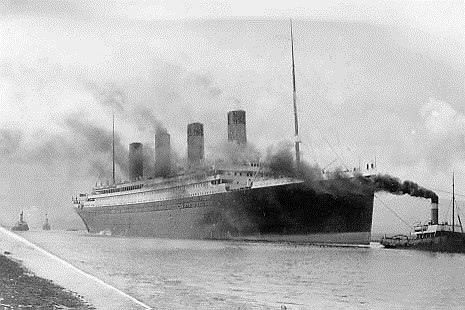
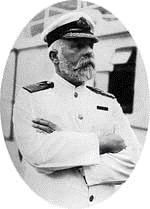
Captain John Edward Smith had previously steered the Olympic but had left that ship in Southampton. He was often described as a “splendid seaman” who loved his dog as well as a cigar. He had commanded the maiden voyages for all the “Big Four” ships (Adriatic, Baltic, Cedric and Celtic), the Olympic and now the Titanic. He was known as EJ to those who served under him. He had an engaging manner and pleasing personality and had the reputation of being an ideal captain.
Familiar with the helm, he once said with confidence:
“I cannot imagine any condition which would cause a modern ship to founder ...... Shipbuilding has gone beyond that…”
Titanic's Ticket Prices
A single-person berth in First Class cost between £30 (equivalent to £3,240 in 2017), to £870 (equivalent to £93960.00 in 2017) for a parlour suite and small private promenade deck.
The average ticket price for an adult Second Class passenger was £13, the equivalent of £1404 today. Third Class passengers paid £7 (£756 today) for their ticket, depending on their place of origin; ticket prices often included the price of rail travel to the three departure ports. Tickets for children cost £3 (£324 today).
